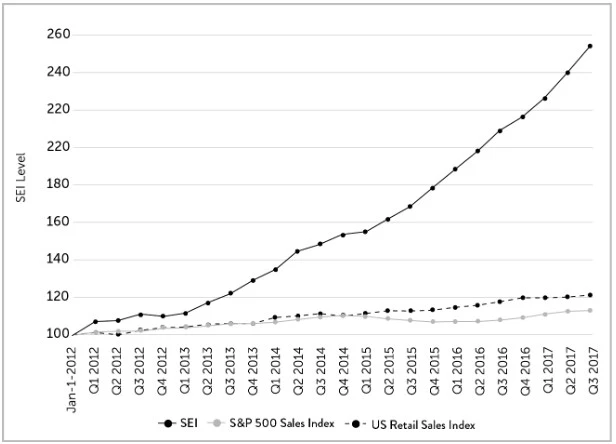In the dynamic landscape of subscription-based businesses, measuring recurring revenue is crucial for evaluating financial performance and forecasting future growth. Financial experts have developed a range of tools for analysis in this precise dimension.
Two commonly used metrics, Committed Annual Recurring Revenue (CARR) and Annual Recurring Revenue (ARR), offer valuable insights into a company’s revenue streams. They are both considered the analytical pillars of subscription-based business models.
CARR and ARR serve as fundamental yardsticks for assessing the stability, predictability, and growth potential of a company’s recurring revenue base.
While ARR provides a snapshot of the annual revenue generated from existing customers, CARR takes into account the total contracted revenue from active customers, offering a forward-looking perspective.
Understanding the distinctions and implications of the CARR vs ARR phenomena is essential for informed decision-making and strategic planning, especially considering the rapid growth seen by the subscription-based revenue model, as indicated below:

As indicated above, the subscription economy index (SEI) has seen explosive growth in the last decade, with an annual growth rate of 17.6%, compared to the S7P 500 Sales Index growth rate of 2.2%.
In light of the growing significance of the SEI, we find it pertinent to delve into the world of CARR vs ARR, exploring their definitions, calculation methods, advantages, and potential limitations.
| ARR | CARR | |
| Definition | Annual Recurring Revenue (ARR) is the total amount of predictable and recurring revenue that a company expects to generate from its customers over the course of a year.
It includes subscription fees, service charges, and any other recurring revenue streams. |
Committed Annual Recurring Revenue (CARR) refers to the total contracted revenue a company expects to receive from its customers on an annual basis, based on recurring subscriptions or long-term contracts.
The CARR meaning represents the predictable and reliable revenue stream that a company can count on over a year. |
| Explanation of Calculation | ARR is calculated by multiplying the average monthly recurring revenue (MRR) by 12.
For this calculation, MRR is the sum of all recurring revenue generated from active customers in a given month. |
CARR is calculated by summing up the total contracted revenue from all active customers over a year
It includes recurring subscriptions and long-term contracts, providing an annualized view of the revenue the company can expect to receive. |
| Example of Calculation | To calculate ARR, we assume a company has 300 active customers with an average monthly recurring revenue (MRR) of $200 each.
The ARR would be $60,000 (MRR) multiplied by 12 (months), resulting in an ARR of $720,000. |
To calculate CARR, consider a company with five active customers who have committed to annual contracts worth $7,000, $6,000, $4,000, $9,000, and $8,000, respectively.
The CARR would be the sum of these contract values, resulting in a CARR of $34,000. |
| Advantages | Using ARR provides a clear and standardized metric for measuring recurring revenue, allowing for easier comparison and analysis of revenue performance over time.
It also helps businesses assess their growth potential, attract investors, and make informed decisions regarding customer acquisition and retention strategies. |
Using CARR provides a comprehensive view of the total contracted revenue, allowing businesses to accurately forecast and plan for future revenue streams.
It also helps measure the stability and growth potential of a company’s recurring revenue base, making it valuable for financial reporting and investor communication. |
| Disadvantages | Using ARR may not account for fluctuations in customer behavior or changes in pricing models, potentially leading to an inaccurate representation of revenue.
Additionally, ARR does not capture non-recurring or one-time revenue, which can be significant for certain business models, thereby limiting the overall financial picture. |
Using CARR may not reflect the actual revenue received, as it relies on the assumption that all contracted revenue will be fully realized.
It also does not account for changes in customer churn or contract renewals, which can impact the accuracy of long-term revenue projections. |
Comparison of CARR and ARR with Real-Life Examples
One of the best ways to drive the point home in our discussion to help explain what is CARR vs ARR in terms of their distinctions is by turning to real-life examples of each being applied in the real world. This will significantly help our comparative analysis of CARR vs ARR
ARR: Real-Life Example
Digi International Inc. (NASDAQ: DGII) is a company that offers services that relate to the Internet of Things (IoT) realm. Its clients hail from a wide range of different industries including healthcare, logistics, food services, quality control, and others.
Digi primarily deals with large organizational customers that sign up for annual services on a subscription-based model. Moreover, Digi comes up with its ARR figure by multiplying its total monthly recurring revenue by 12, to ensure an annualized figure.
Its recurring revenue, as per its latest quarter, amounted to $99 million, showing growth of 10% against the prior quarter. Overall sales, including non-recurring revenue, totaled $111 million for the year.
ARR is considered the main performance metric for Digi International, implying the company is a stable player with a consistent cash flow.
CARR: Real-Life Example
Stem Inc. (NYSE: STEM) provides intelligent energy storage services to clients across the United States. Its business is supported by a recurring revenue model that is fully subscription-based.
One noteworthy aspect that relates to Stem, is the fact that its management heavily employs the CARR metric for performance appraisal. In the last quarter of 2022, Stem saw its CARR grow by 5%, year-on-year, resulting in a quarterly total of $61 million.
In its financial reports, Stem often specifies its CARR figure for the period, which it calculates by adding the total of each customer’s annual recurring bill.
When to Use CARR over ARR
CARR is often used in situations where businesses want to emphasize the long-term contractual commitments and predictability of their revenue streams.
Here are some scenarios where CARR may be more useful than ARR. Understanding this difference in application is the key to understanding the distinction between CARR vs ARR.
- Long-Term Contracts: CARR emphasizes the value of multi-year contracts and highlights long-term revenue commitments.
- Revenue Forecasting: CARR enables accurate projections of future revenue streams, especially for long-term contracts or predictable subscription models.
- Investor Communication: CARR demonstrates stability and predictability of revenue, making it valuable for investor discussions.
- Long-Term Contracts: CARR emphasizes the value of multi-year contracts and highlights long-term revenue commitments.
When to Use ARR over CARR
Moving on with our CARR vs ARR assessment, we now focus on the situations where businesses are more inclined to employ ARR, rather than CARR. Some of these scenarios are detailed below:
-
Pricing Flexibility
If a company offers flexible pricing models or has a significant portion of its revenue coming from month-to-month subscriptions, ARR provides a more accurate representation of the revenue generated on an annual basis.
-
Shorter Contract Duration
When dealing with customers who have shorter contract commitments or higher churn rates, ARR provides a more immediate and relevant measure of recurring revenue, focusing on the current revenue generation.
-
Early-Stage Startups
For early-stage startups that may not have significant long-term contracts or a mature customer base, ARR serves as a more practical and immediate metric to gauge revenue performance and growth potential.
-
Near-Term Forecasting
ARR can be advantageous for short-term sales forecasting and near-term revenue projections, especially in industries where customer contracts and commitments are more fluid.
Conclusion
The comparison between CARR vs ARR provides valuable insights into the recurring revenue landscape of subscription-based businesses.
By understanding the nuances and applications of these metrics, organizations can make more informed decisions, accurately evaluate revenue performance, and strategize for future growth.
As subscription-based business models continue to proliferate across various industries, the importance of measuring and analyzing recurring revenue cannot be overstated.
The rise of the subscription economy has transformed how companies generate revenue and interact with customers, making CARR and ARR vital tools for assessing financial health, attracting investors, and planning for sustainable growth.
In light of the rapid expansion of the subscription-based economy, understanding the distinction between CARR vs ARR is crucial because it enables businesses to effectively adapt strategies to thrive in this evolving landscape.
Frequently Asked Questions
What Is CARR In Revenue?
CARR is the total amount of revenue a company expects to generate from its customers over a year, based on long-term contracts and recurring subscriptions, providing a forward-looking view of the company’s revenue stream.
What Is the CARR Rate?
The CARR rate refers to the amount of a company’s committed annual recurring revenue it generates in comparison to its total revenue in percentage form.
What Is the Full Form Of CARR?
The full form of CARR is committed to annual recurring revenue. This is sometimes also called contracted annual recurring revenue.
What Is the Full Form Of ARR?
The full form of ARR is Annual Recurring Revenue, which represents the totally predictable and recurring revenue a company expects to generate from its customers over a year.










